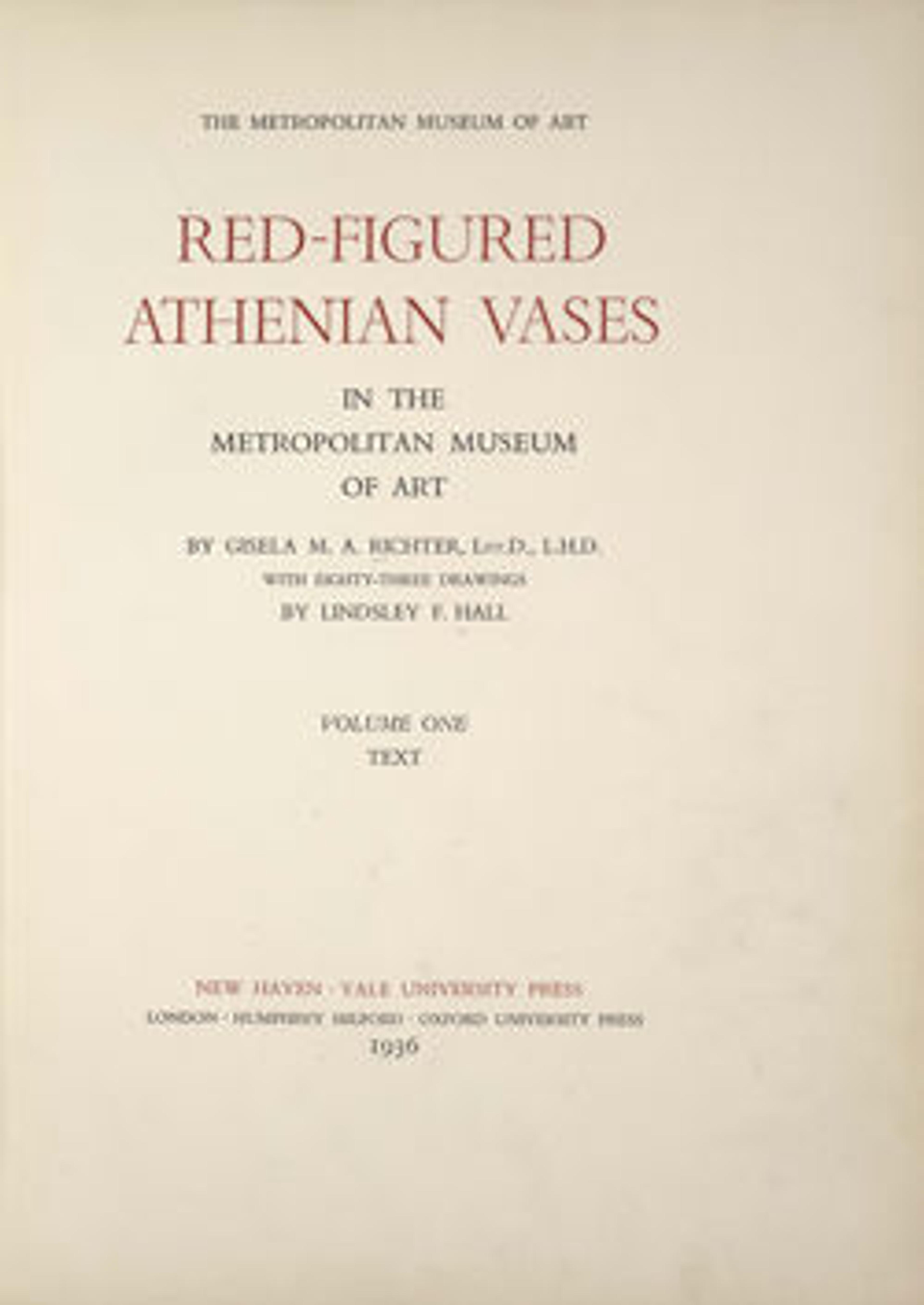Terracotta bell-krater (bowl for mixing wine and water)
Obverse, Kadmos
Reverse, Hermes and Athena
The oracle of Apollo at Delphi directed Kadmos to follow a cow that he would find and to establish a city where she lay down. That site became Thebes, in the region of Boeotia. The only available spring was guarded by a dragon born of Ares, the god of war. With the help of Athena, Kadmos killed the dragon—here depicted as a snake—and from its teeth a population of armed warriors sprang up. Kadmos advances with a hydria to fetch water and a stone and spears to kill the snake. The identity of the woman is unknown; she may be a personification of the city or possibly his future wife, Harmonia, the daughter of Aphrodite and Ares.
Reverse, Hermes and Athena
The oracle of Apollo at Delphi directed Kadmos to follow a cow that he would find and to establish a city where she lay down. That site became Thebes, in the region of Boeotia. The only available spring was guarded by a dragon born of Ares, the god of war. With the help of Athena, Kadmos killed the dragon—here depicted as a snake—and from its teeth a population of armed warriors sprang up. Kadmos advances with a hydria to fetch water and a stone and spears to kill the snake. The identity of the woman is unknown; she may be a personification of the city or possibly his future wife, Harmonia, the daughter of Aphrodite and Ares.
Artwork Details
- Title:Terracotta bell-krater (bowl for mixing wine and water)
- Artist:Attributed to the Cassel Painter
- Period:Classical
- Date:ca. 440–430 BCE
- Culture:Greek, Attic
- Medium:Terracotta; red-figure
- Dimensions:H. 13 7/8 in. (35.3 cm)
diameter of mouth 14 5/8 in. (37.1 cm) - Classification:Vases
- Credit Line:Rogers Fund, 1922
- Object Number:22.139.11
- Curatorial Department: Greek and Roman Art
More Artwork
Research Resources
The Met provides unparalleled resources for research and welcomes an international community of students and scholars. The Met's Open Access API is where creators and researchers can connect to the The Met collection. Open Access data and public domain images are available for unrestricted commercial and noncommercial use without permission or fee.
To request images under copyright and other restrictions, please use this Image Request form.
Feedback
We continue to research and examine historical and cultural context for objects in The Met collection. If you have comments or questions about this object record, please contact us using the form below. The Museum looks forward to receiving your comments.
